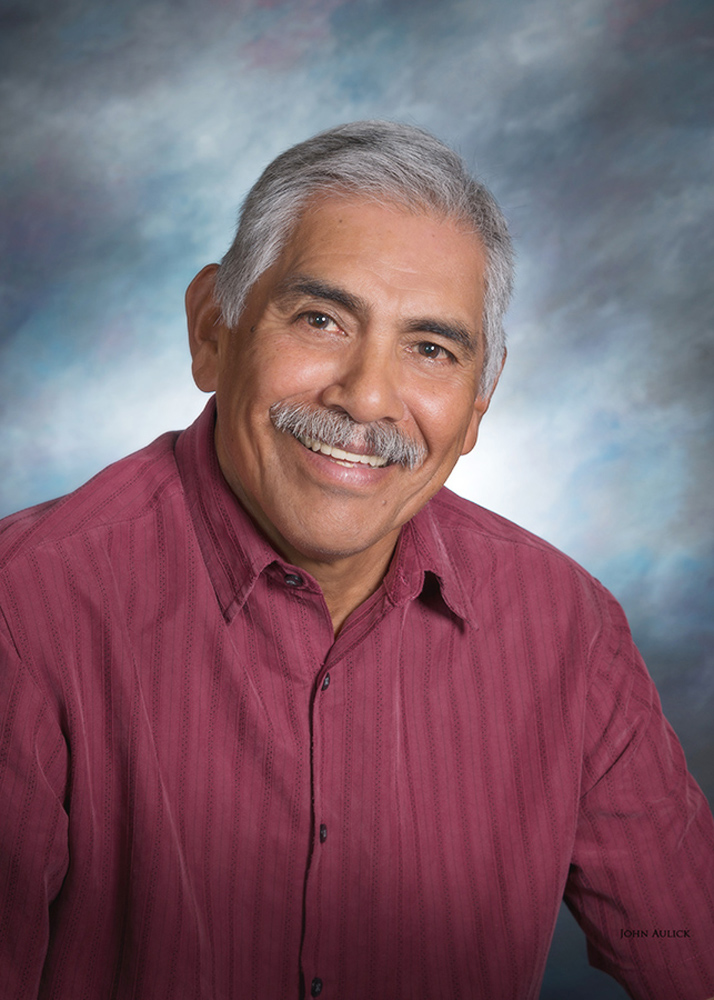A’AGA – Something To be Told: Local History
October 6, 2017
By Billy Allen
The September edition of the Ak-Chin O’odham Runner noted that the Arizona State Historic Preservation Office Governor’s Heritage Preservation Honor Award for 2017 was given to the Ak-Chin Community for its preservation of the St. Francis of Assisi Mission School building.
The school and church were opened in 1926 by Fr. Antonine Willenbrink. The teacher for the school was Isabel Kisto from Bapchule. The school was re-opened three years ago. I began to wonder about other mission schools which have closed: San Solano in Topawa and St. John’s in Komatke (Komatk/thick mountain).
Early in 1896, the Franciscan order made Phoenix a base in order to better serve southern Arizona. In April of that year, Father Novatus Benzing drove a horse drawn buggy south to deliver mass at the village of Komatk. Eventually St. John the Baptist Mission was established there.
Five years later, two Sisters of St. Joseph of Carondolet in Tucson set out for Komatk. Their train to Phoenix was stopped at a damaged trestle over the Gila River. The only way to get to a waiting train on the other side was by handcar. The Sisters risked it and continued their journey. Upon arriving in Phoenix, the Sisters took a horse and buggy to Komatk.
The village had two buildings, a small dirt floor convent and the church itself which doubled as the school during the week. Overcoming obstacles such as outdoor cooking and doing laundry in the river bed, the Sisters stayed for thirty-seven years.
Their order would build schools at Bapchule, San Xavier, Fort Yuma, and San Diego. In addition, two small chapels were also constructed but now only remain as ruins; the tower ruins of St. Michael’s in Hashen Kehk and St. Joseph’s at Wetcamp.
Father Augustine Schwarz arrived in 1916 at St. John the Baptist Mission and Boarding School, which had about 500 students. During the next three years Father Schwarz made regular trips (first by mule, then horse-drawn wagon, and finally a car), to Florence, Fort McDowell, and Salt River. Later he was assigned to the Tohono O’odham Nation and helped establish churches in Pisinimo, Fresnal and Cowlic.
Cowlic’s altar had a chalice from Germany and paintings from Chicago.
In 1916, Rev. Father Antonine Willenbrink arrived in Arizona and served as pastor at St. John’s Mission and also at St. Francis of Assisi Mission at Ak-Chin. Living among us, he became a fluent O’odham speaker and published a dictionary of our ñeok (language) in 1935. Father Antonine died at the Indian Hospital in Phoenix in 1947.
Eighty-two years later, many words he wrote down have remained the same. You can sound out the words using your best O’otham accent. The largest buildings of the time were the Catholic church or santo meeshkee and the Protestant church or mimsh ha meeshkee. Oss meant wood; tai-i is eastward; kweeca for westward; d’am for southward; voechio for northward or below; and tawmook for the Milky Way. Some cowboy tools: peelin for bridle; vanchkwikut for reins; geefkut for a whip; and leat for a cowhide rope.
The names of certain villages have not changed; Komatk, Vahkee, Stotonik, Haashanyh Koe-ek, Oos Koe-ek, and Akchin. Some old names still used by a few; Chuev Skawmakhi Voechio (below the tall gray mtn. /Santan); Komatk Voechio (below the thick mtn. /Santa Cruz village); Kavulk (hill/Sacaate); and Malicawba (Maricopa). The cardinal is si’puk, nui is the buzzard, chukut is an owl, okok’koi is a white-wing dove, havan is the raven, kak’kaichu is a quail, and ne’pot is the nighthawk.
Ta’dai is the roadrunner or runroader which runs so fast, it pulls up the earth when it runs. I have used Father Willenbrink’s spelling for the O’otham words. The complete lexicon is available in the Labriola Center at ASU. To learn more about Father Antonine Willenbrink, an exhibit panel has been created by Jeremy Johns at St. Francis of Assisi Mission School in Ak-Chin. It would be worth the drive to pick up the latest edition of the Runner-but pick up the GRIN first.
The following websites were visited;
http://parentseyes.arizona.edu/carondelet/cammack_komatke.html
https://www.asu.edu/lib/archives/schwarz/pimeriaintroduction.html
Notes on the Pima Language by Rev. Antonine Willenbrink, O.F.M. 1935; the Franciscan Fathers of Californian. Original in Wayne Pratt Papers in Labriola Center, ASU.
St. Michael’s Mission, Hashan Kehk, Gila River Indian Community
PM 2171 .W5x LNAIDC
History of Maricopa, F819.M37 .B 76, 2011.
St. Joseph’s Church, Wetcamp, Gila River Indian Community
History of Saint Johns by Sister Bernadette Bothe in Labriola Center E99.P67 B67 1953
Notes on the Pima Language by Rev. Antonine Willenbrink, O.F.M.
1935; The Franciscan Fathers of Californian
PM 2171 .W5x LNAIDC
Original in Wayne Pratt Papers in Labriola Center.
keehim village
awohia sand also o’o; from the..
awot gravel
awbga enemy
kawts cross
maskal silk bandana
sivaiyo barley
spooluvam alfalfa
hivai sunflower
s’hook warm
Villages and Towns
Kuiva West End
Lihai Lehi
Hol che dum Maricopa village 4 miles from Sacaton (east/west?) from Middle Gila
Goe-e Kee Sacaton Totsitk East Sacaton
or Chukma Su:dag Blackwater
Santan
S’hukak Prescott
Tubac Cewag (Clouds) Shadows at Dawn website
Or Rotten, see big notebook.
AmeKwenorse Big Square Mountain or Pinal Mountain from Middle Gila Book.
Cababi Kav Vahvai
Sasabe Sasavk geocities.com GeoNative-Seri-Pima-Tohono O’odham
No-wahl Nogales
sha’ shan blackbird
Tohono O’odham dialects and their meanings; Of Earth and Little Rain
Huhhu’ula grandmother’s children or orphans
Gigimai braggarts
Huhuwosh unknown
Ko-lohdi owl (tecolote)
Ge Aji big narrow place
Ahngam desert willow
Kohadk dried and burned
Totoguani loose g-string or guttural speech
Wakon O’odham San Xavier people (baptized)
Antonine Willenbrink, O.F.M.

